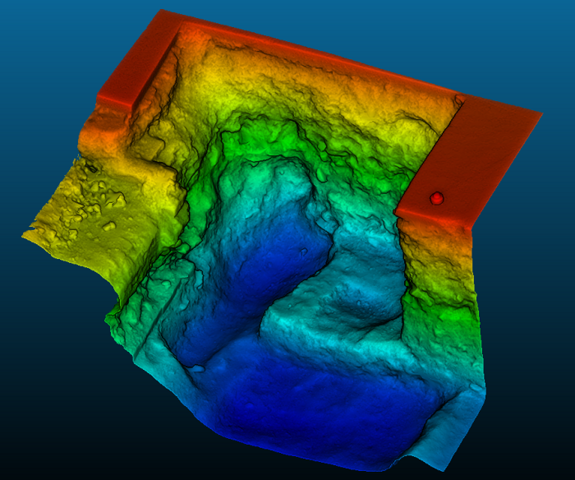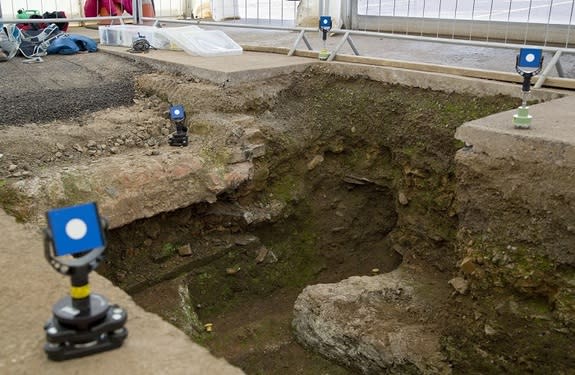Richard III Grave Reconstructed in 3D
The grave of King Richard III has been preserved for posterity — digitally at least. Scientists say they created a 3D reconstruction of the monarch's burial place discovered beneath a parking lot in Leicester, England, last year.
The researchers combined laser scanning with digital photogrammetric techniques to map the terrain of the grave as it was after the battle-scarred skeleton of Richard III was removed.
"Historically, you would have had to physically go into your survey area and measure every point by hand," explained David Ackerley, a geography researcher at the University of Leicester. [Images: In Search of the Grave of Richard III]
"This technique allows for a quick, high-resolution recording of features in areas that may be inaccessible — or where you want to preserve the layout of your site," Ackerley added in a statement. And importantly, this method can be used without disturbing the site. "This really is the 21st-century approach to the sketchpad."
Ackerley and his colleagues hope to combine digital photos with the laser scans to add context and depth to the images of the grave, according to the University of Leicester, which is leading the research at the site.
Researchers had long sought the lost grave of Richard III, who ruled England from 1483 until his death in battle during the War of the Roses in 1485. With historical records as their guide, archaeologists started digging beneath the Leicester City Council parking lot last August, looking for the king's grave. They soon found the ruins of the lost medieval Grey Friars church and then a battle-scarred male skeleton thought to belong to Richard.
In February, researchers announced that DNA from the teeth and a bone matched with a modern relative of Richard III. The body eventually will be reinterred in the Leicester Cathedral, and a visitor center is being built at the site to showcase some of the finds.
This summer, the same archaeologists have returned to the site for a four-week excavation, hoping to find out more about the church where Richard was buried. They have also said they intend to examine the other burials at Grey Friars, including one coffin that may belong to a medieval knight. The researchers are also looking out for evidence of headless friars. As legend has it, a group of Grey Friars were beheaded by Henry IV and buried at the church.
Follow Megan Gannon on Twitter and Google+. Follow us @livescience, Facebook & Google+. Original article on LiveScience.com.
Copyright 2013 LiveScience, a TechMediaNetwork company. All rights reserved. This material may not be published, broadcast, rewritten or redistributed.



